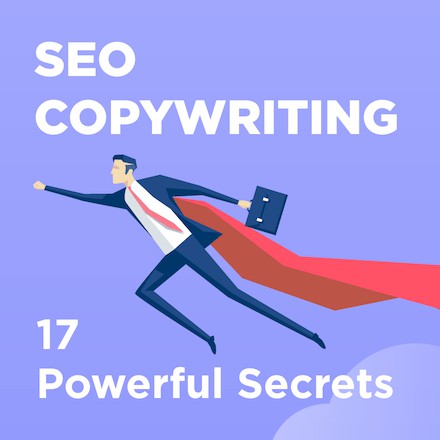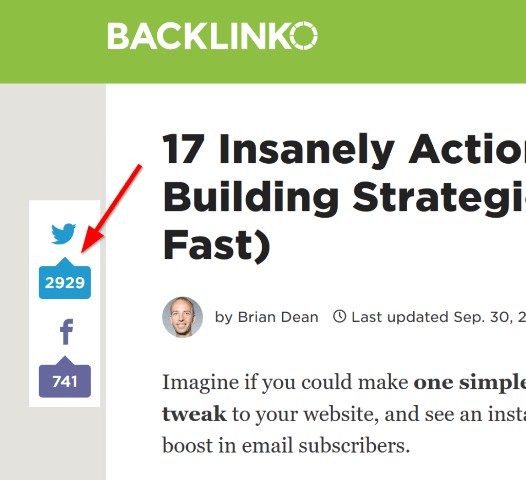SEO Copywritin

Knowing SEO is great.
Knowing Copywriting is excellent.
But When you're able to do BOTH?
That's When you can slap an "S" on your chest...
...because You'll be unstoppable.
And Today I have something that will make you feel like you have SEO superpowers:
17 Insanely actionable search engine optimization copywriting tips which you could use at the moment.
Notice: This post was first printed in 2015. I recently gave it a much needed upgrade. I also added a bunch of new tips I discovered. Enjoy!
...and You're prepared for secret #4.

Bold promise? Definitely.
However, Remain with me.
What's The big secret I'm talking about?
Create Your own keywords.
I will explain.
If You search for your brand in Google, you probably rank #1.

You Might not have thought about it, but your manufacturer is a key word...
...a Keyword that you automatically rank #1 for.
However, why stop there?
You Can generate boatloads of extra organic traffic when you also brand your techniques and strategies.
For Example:
You have Probably learned about The Skyscraper Technique, my 3-step formula for gaining more organic visitors to your website.

Since I branded my strategy "The Skyscraper Technique", I now have a pipeline of additional traffic coming to my site everyday.
In Fact, based on Google Search Console, the keyword "Skyscraper Technique" gets 1,093 searches each month:

Because I rank #1 for that keyword (and look in the response box) , I get the lion's share of those 1,103 clicks:

Bottom Line?
Whenever You develop a exceptional strategy, strategy, or strategy...
...make Sure you slap a branded title on it.
When You do, you'll find a lot of additional organic traffic.
After You have included a few Bucket Brigades, proceed onto strategy #3...

Now's Super-smart Google doesn't care how many times you cram a key word in your article.
Instead, It pays close attention to Latent Semantic Indexing (LSI) key words. (LSI Key words are a fancy way of saying: "synonyms and closely related words")
And These LSI key words help Google understand what your page is about.
For Example, let us say that you write an article optimized around the keyword "cars".
How Does Google know whether your page is about:
- Cars the Automobile
- Automobiles the movie
- The 1970s rock band (with horrible hair)
- The Canadian Aviation Regulations (CARs)
The Answer? LSI keywords.
For Example, when Google sees a webpage with LSI keywords like this...

...they Know the page is about the cars you drive.
But If Google sees a webpage such as this...

...they Know it is about Cars the film.
So How do you add additional LSI keywords into your content?
I'll explain with an example:
Let's Say your keyword was "playstation RPGs".
First, Search for that keyword in Google:

Then, Scan the page for bold words and phrases that are not the key words you simply typed in.
Here Are some examples out of Google's first page:

See How Google bolds words such as "Final Fantasy VIII" and "PS1"?
This Means that Google believes those terms VERY much like the key words you just searched for.
(In Flip side, LSI keywords)
Finally, Sprinkle these bold terms to your articles...

Look:
Most People today think SEO copywriting is all about placing words after words.
But In my experience, the STRUCTURE of the articles is just as important as the writing itself.
And What better place to locate proven content structures than Udemy?

(In Case you are not familiar with Udemy, it's a huge directory of online courses)
Here is How it is possible to use Udemy to create your next piece of content 2-3x more persuasive:
First, Head over to Udemy and input a keyword.
For Example, let's say you were writing a blog article about photography. You would search for "photography":

Udemy Will reveal all of the popular photography classes:

Next, Decide on a class with a lot of reviews.
Here is one:

Once You pick a program, take a look at how many people have already enrolled in it.
As You're able to see, over 70,000 people have enrolled in this photography course:

Do You see how huge this is?
You are Looking at content that 70,000 people have shelled out cold hard cash to access.
That Means you do not have to rely in your Spidey sense. You KNOW there is going to be demand for your own content.
Thousands Of individuals have already voted...using their pockets.
Currently:
After You've found a favorite course, scroll down to the "Curriculum" section.
That's Where you'll get the proven arrangement you can use for your next blog post, movie or infographic:

Obviously, You don't want to tear off the instructor's course. But You can use bits and pieces of the curriculum for your outline:

Now Which you have your outline, it's almost time to put pencil.
Before You do, make sure to read the next technique on my listing...

Here is The bargain:
Sure, Social sharing buttons allow you to get more shares...
...however Typically, they're not enough.
Instead, I Suggest tapping into a newbie's best friend:
A Call to action.
Let Me explain.
A Few months ago I published "17 Insanely Actionable List Building Strategies That Will Generate More Clients Today":

To Maximize the amount of stocks this article got, I added a "click to converse" button under each item on the list:

To Date, my post has over 2900 tweets...

...and A fantastic chunk of those 2900 tweets came from my "click to tweet" buttons:

Here is The way you can do the same thing:
First, Locate a super actionable suggestion or plan from your post.
Next, Head to ClickToTweet.com. Click on "basic connection":

Turn Your actionable tip to a tweet:

Switch Your actionable tip into a tweet:

Grab The connection...
...and Pop up the connection in your post.
You Can use buttons just like I did. However, plain-text links also work great:
Whether You use a button or a plain link, certainly add one "click To tweet" call to action on your next post.
No comments:
Post a Comment